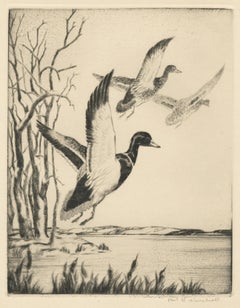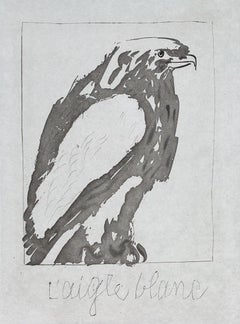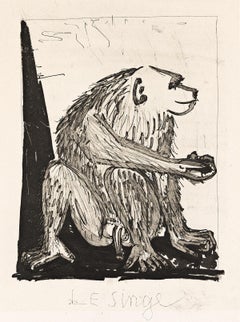Drypoint Animal Prints
1940s American Realist Drypoint Animal Prints
Drypoint
1940s American Realist Drypoint Animal Prints
Drypoint
1920s American Realist Drypoint Animal Prints
Drypoint
1920s American Impressionist Drypoint Animal Prints
Drypoint
20th Century Modern Drypoint Animal Prints
Drypoint, Aquatint
1930s Modern Drypoint Animal Prints
Drypoint, Aquatint, Etching
20th Century Modern Drypoint Animal Prints
Drypoint, Aquatint
20th Century Modern Drypoint Animal Prints
Drypoint, Aquatint
20th Century Modern Drypoint Animal Prints
Drypoint, Aquatint
20th Century Modern Drypoint Animal Prints
Drypoint, Aquatint
20th Century Modern Drypoint Animal Prints
Aquatint, Drypoint
20th Century Modern Drypoint Animal Prints
Aquatint, Drypoint
20th Century Modern Drypoint Animal Prints
Aquatint, Drypoint
20th Century Modern Drypoint Animal Prints
Drypoint, Aquatint
1970s Abstract Expressionist Drypoint Animal Prints
Engraving, Drypoint, Etching, Aquatint
20th Century Modern Drypoint Animal Prints
Aquatint, Drypoint
20th Century Modern Drypoint Animal Prints
Drypoint, Aquatint
20th Century Modern Drypoint Animal Prints
Drypoint, Aquatint
20th Century Modern Drypoint Animal Prints
Aquatint, Drypoint
20th Century Modern Drypoint Animal Prints
Drypoint, Aquatint
20th Century Modern Drypoint Animal Prints
Aquatint, Drypoint
20th Century Modern Drypoint Animal Prints
Drypoint, Aquatint
20th Century Modern Drypoint Animal Prints
Aquatint, Drypoint
20th Century Modern Drypoint Animal Prints
Drypoint, Aquatint
1970s Surrealist Drypoint Animal Prints
Drypoint, Paper, Aquatint
1970s Surrealist Drypoint Animal Prints
Paper, Drypoint, Etching
1970s Surrealist Drypoint Animal Prints
Drypoint, Paper, Aquatint
Late 20th Century Surrealist Drypoint Animal Prints
Drypoint, Paper
1970s Surrealist Drypoint Animal Prints
Drypoint, Paper, Aquatint
1970s Surrealist Drypoint Animal Prints
Drypoint, Paper, Aquatint
1970s Surrealist Drypoint Animal Prints
Drypoint, Paper, Aquatint
1970s Surrealist Drypoint Animal Prints
Drypoint, Paper, Aquatint
Late 20th Century Surrealist Drypoint Animal Prints
Drypoint, Paper
1970s Surrealist Drypoint Animal Prints
Drypoint, Aquatint, Paper
1970s Surrealist Drypoint Animal Prints
Drypoint, Paper, Aquatint
1970s Surrealist Drypoint Animal Prints
Drypoint, Paper, Aquatint
1970s Surrealist Drypoint Animal Prints
Drypoint, Aquatint, Paper
Late 20th Century Surrealist Drypoint Animal Prints
Drypoint, Paper
Late 20th Century Surrealist Drypoint Animal Prints
Drypoint, Paper
Late 20th Century Surrealist Drypoint Animal Prints
Paper, Drypoint
1970s Surrealist Drypoint Animal Prints
Drypoint, Etching, Lithograph
1930s Abstract Expressionist Drypoint Animal Prints
Engraving, Drypoint
1970s Modern Drypoint Animal Prints
Paper, Ink, Drypoint
1950s Modern Drypoint Animal Prints
Etching, Drypoint
1940s American Realist Drypoint Animal Prints
Drypoint
1940s American Realist Drypoint Animal Prints
Drypoint
1970s Surrealist Drypoint Animal Prints
Drypoint, Aquatint
1990s Contemporary Drypoint Animal Prints
Drypoint, Etching, Aquatint
1930s Cubist Drypoint Animal Prints
Drypoint, Paper, Aquatint, Engraving
Mid-20th Century Modern Drypoint Animal Prints
Handmade Paper, Drypoint, Etching
1970s Contemporary Drypoint Animal Prints
Drypoint, Etching
Late 20th Century Contemporary Drypoint Animal Prints
Drypoint, Mezzotint, Aquatint
1980s Contemporary Drypoint Animal Prints
Paper, Ink, Drypoint
1980s Contemporary Drypoint Animal Prints
Paper, Ink, Drypoint
Late 20th Century Post-Modern Drypoint Animal Prints
Archival Paper, Drypoint, Etching, Aquatint
1970s Surrealist Drypoint Animal Prints
Color, Drypoint, Etching
1920s Other Art Style Drypoint Animal Prints
Drypoint, Etching
1970s Contemporary Drypoint Animal Prints
Etching, Paper, Drypoint





